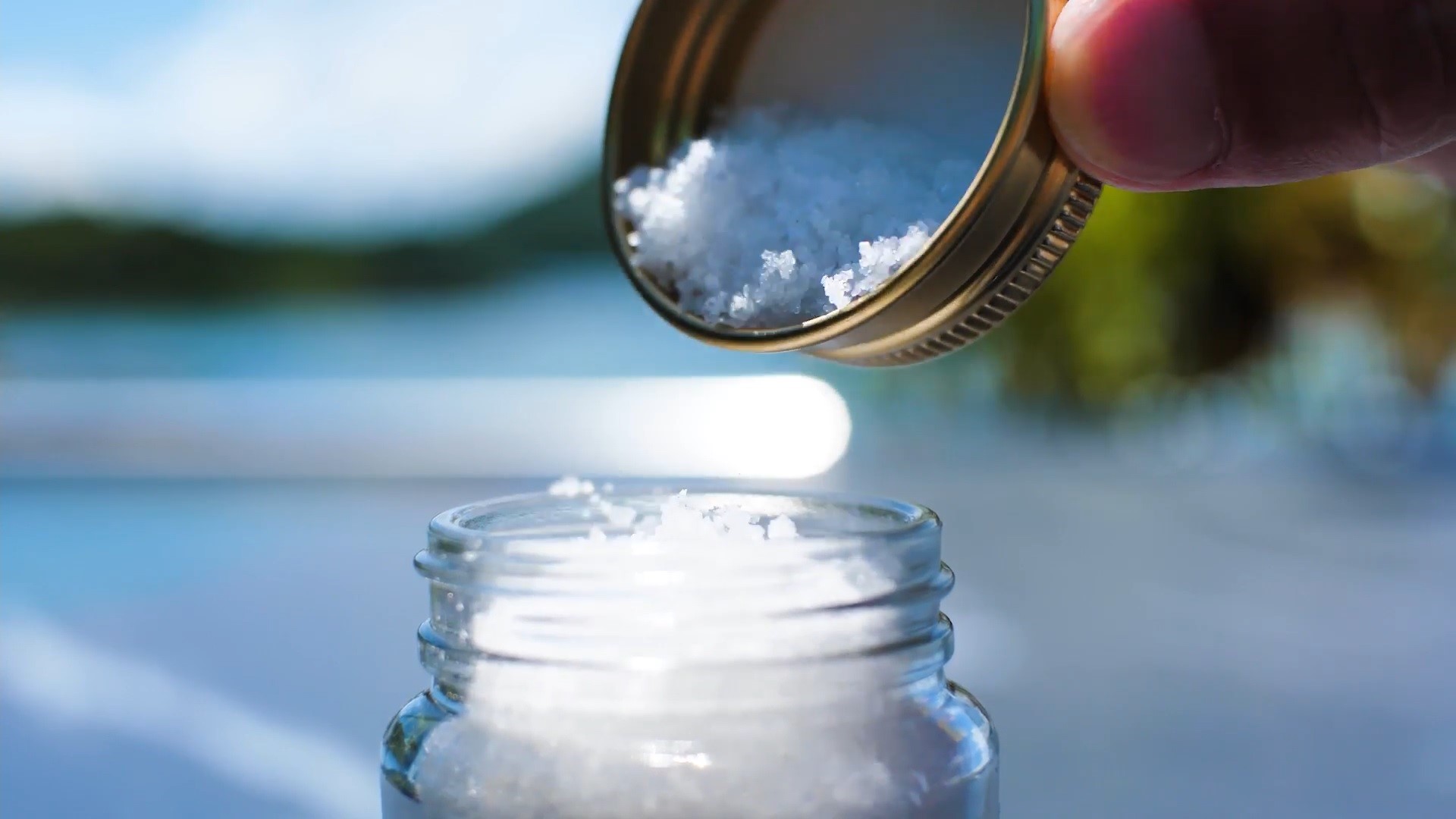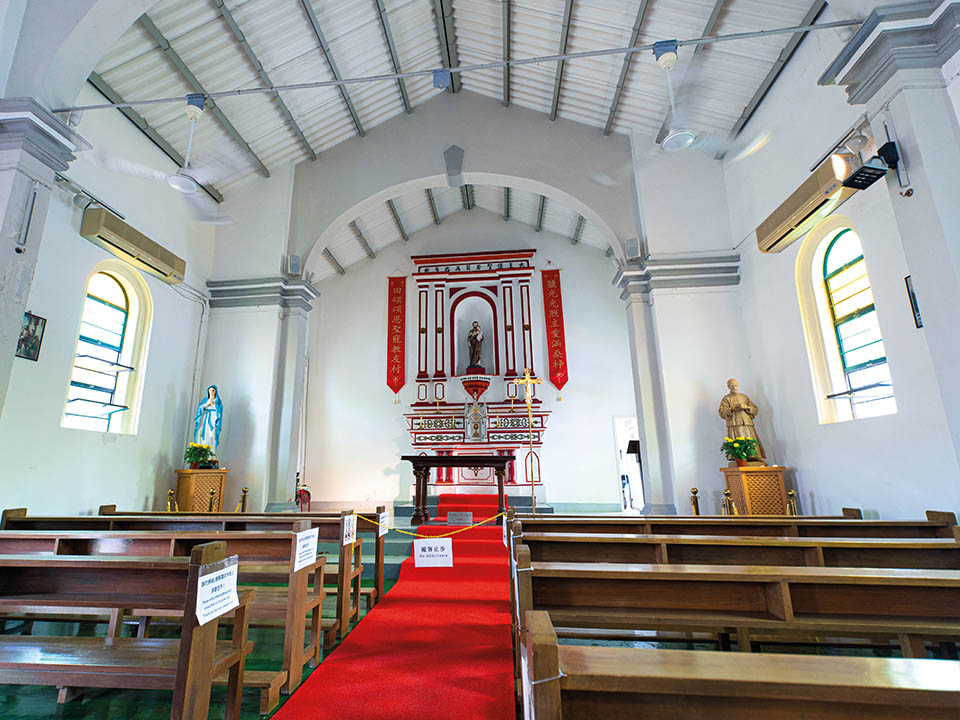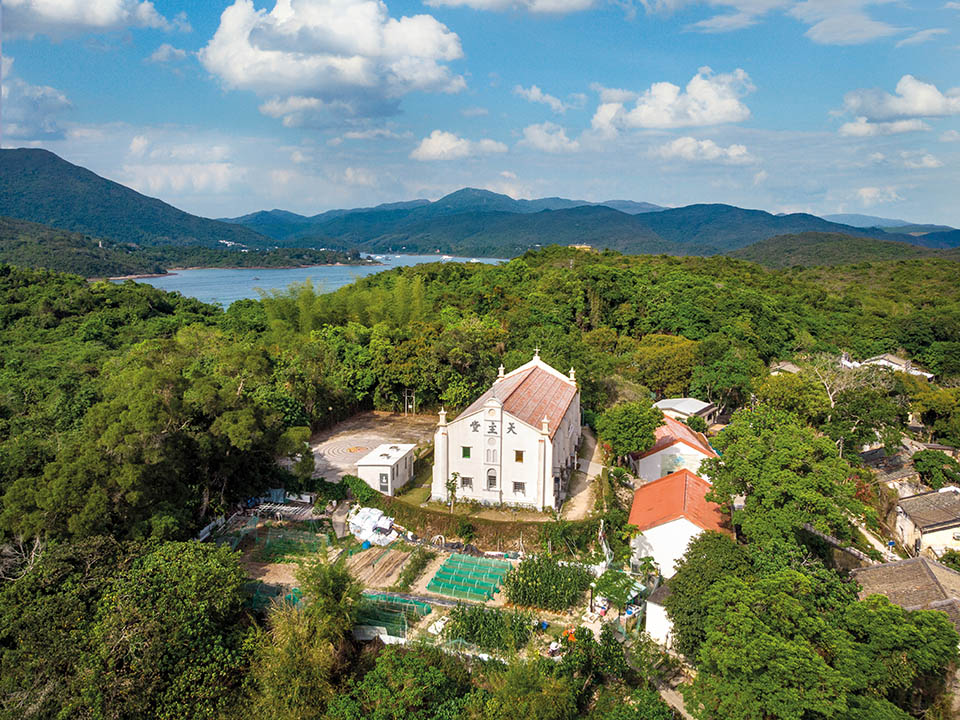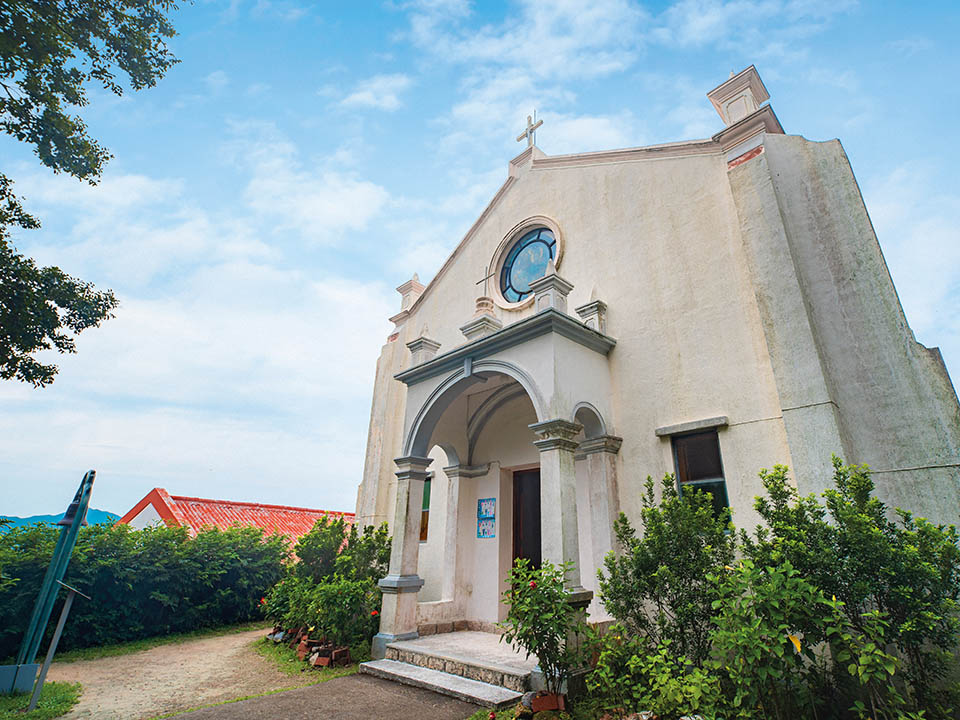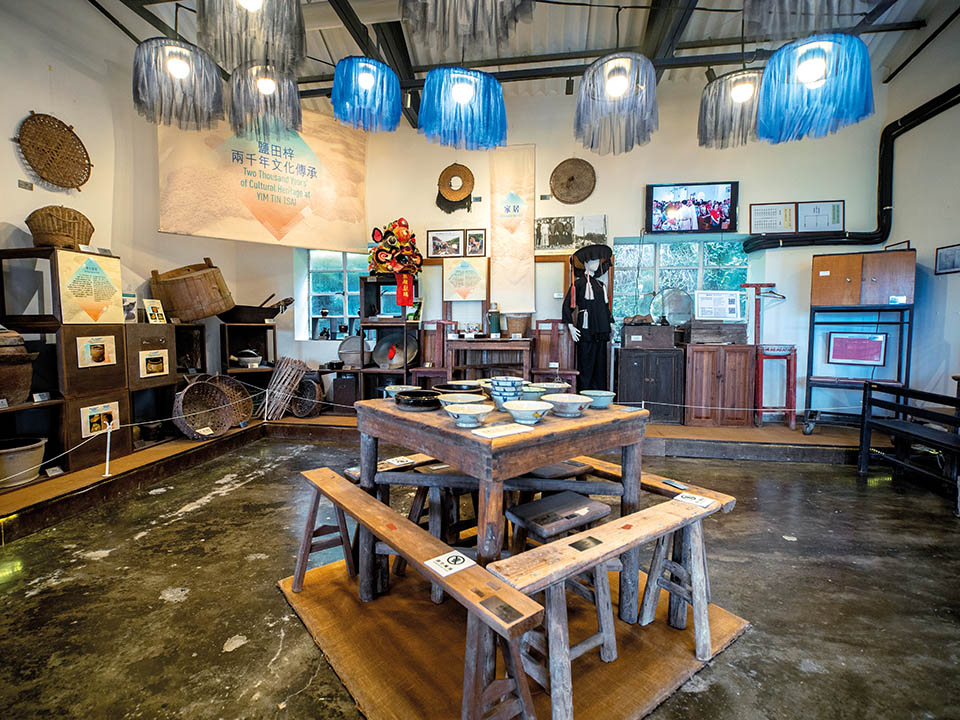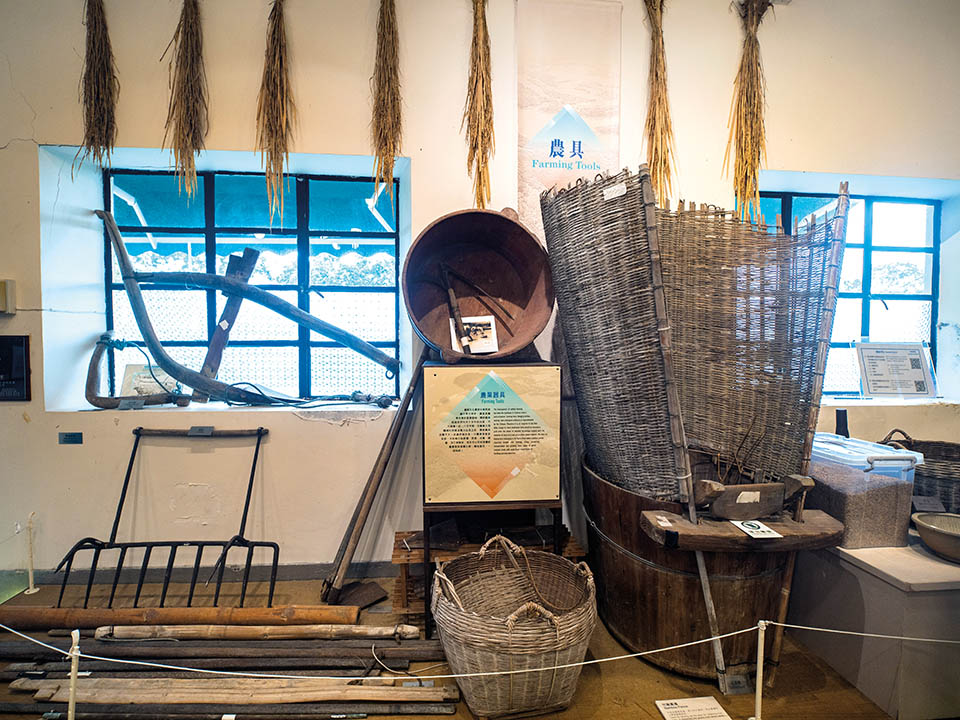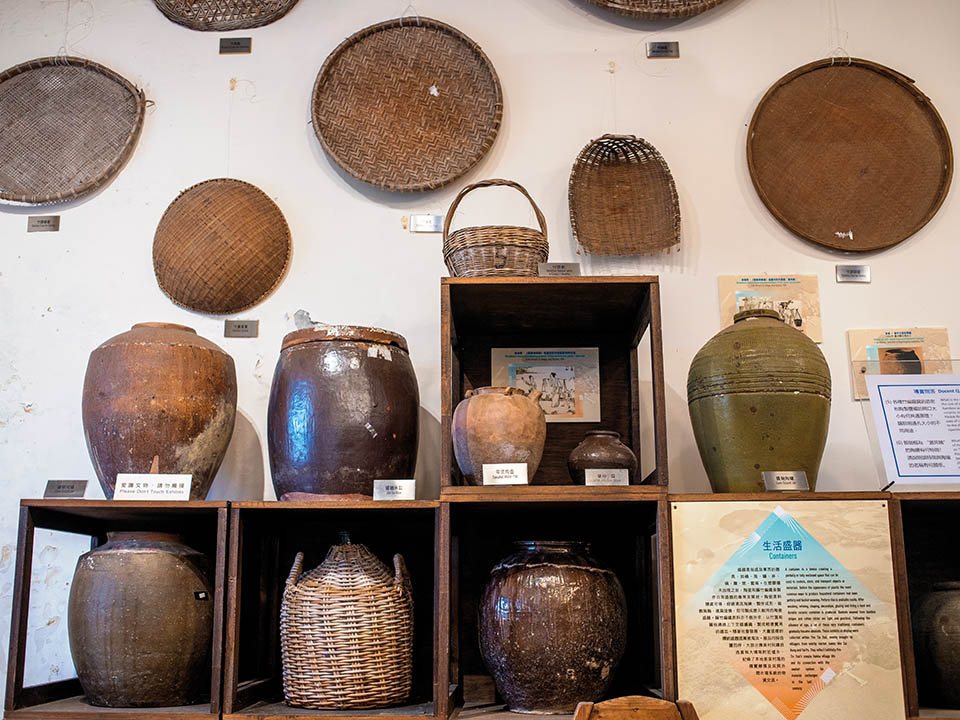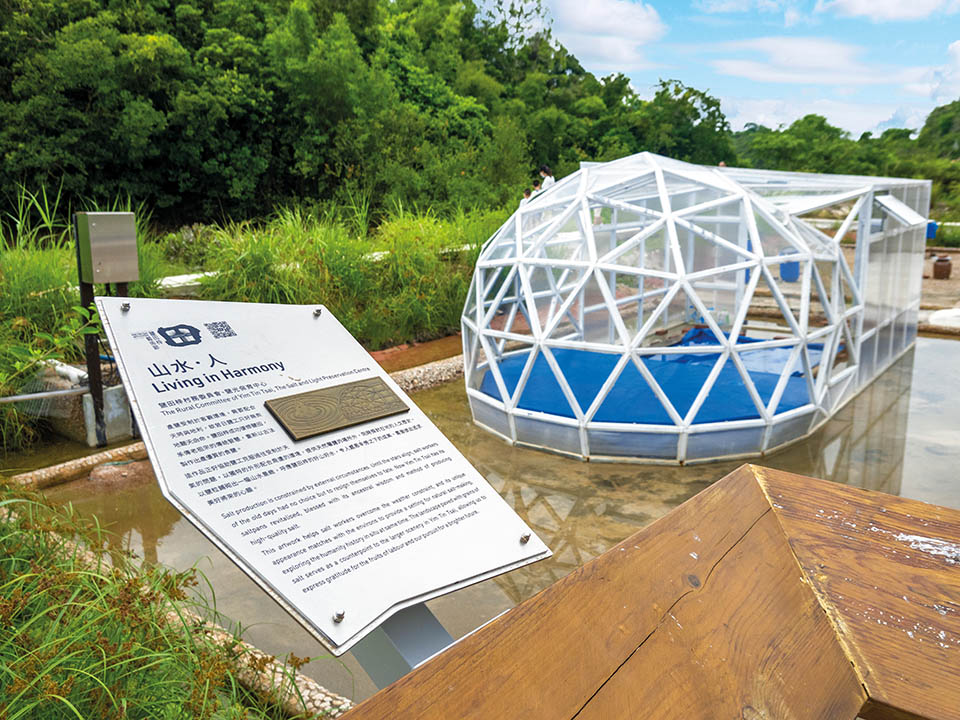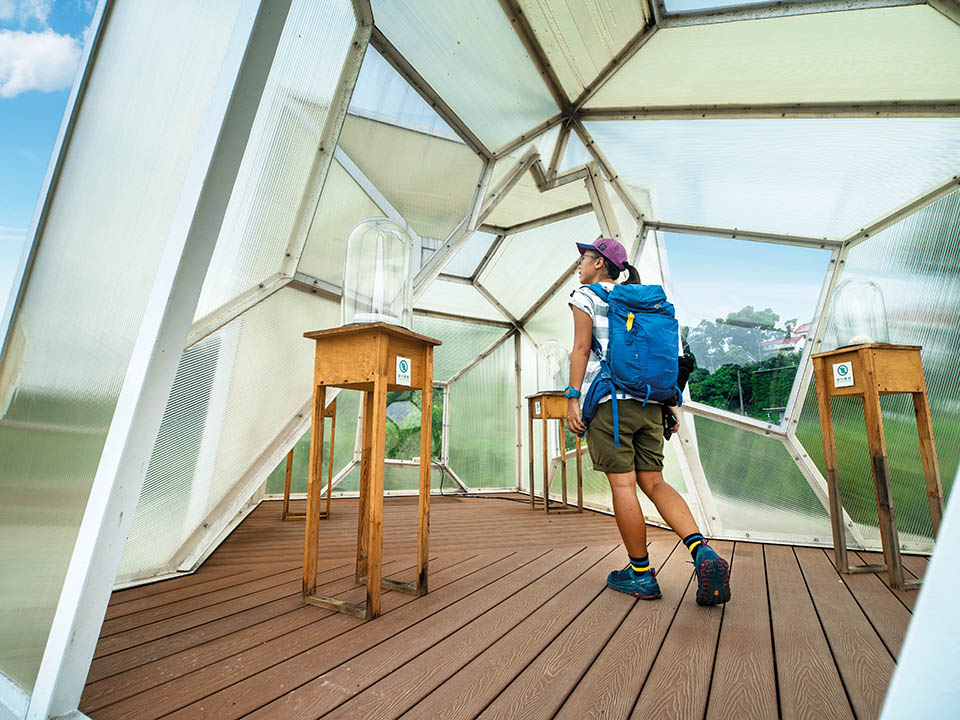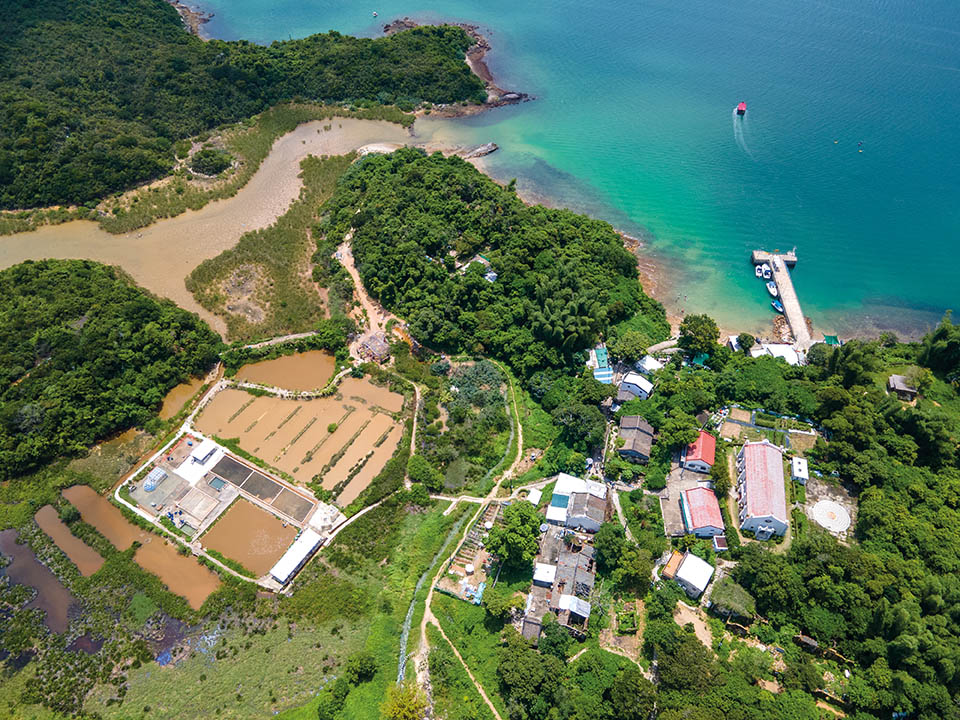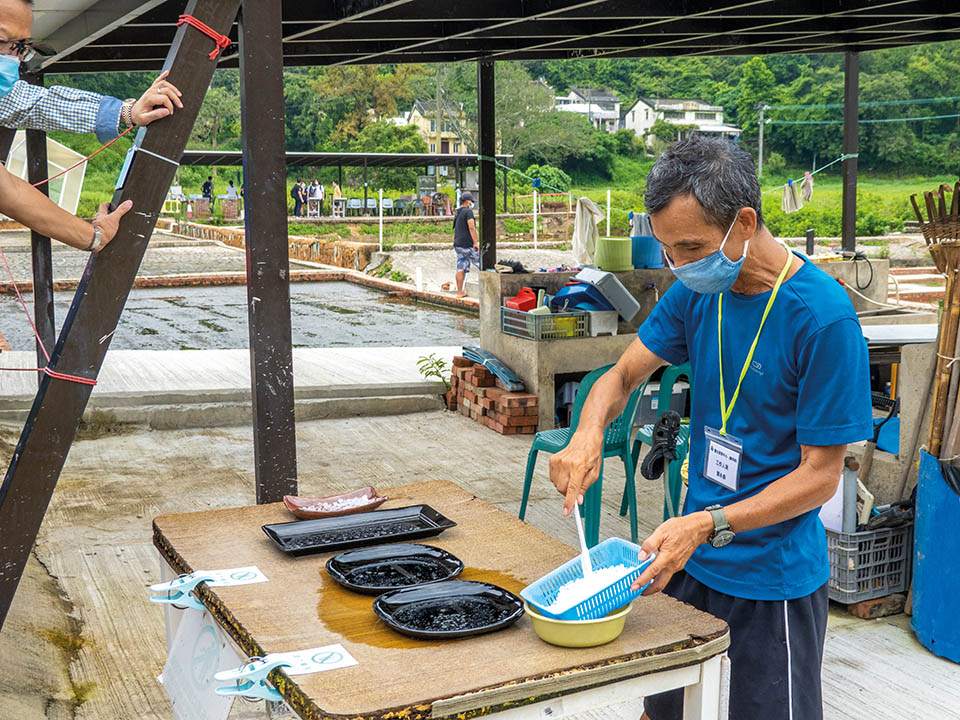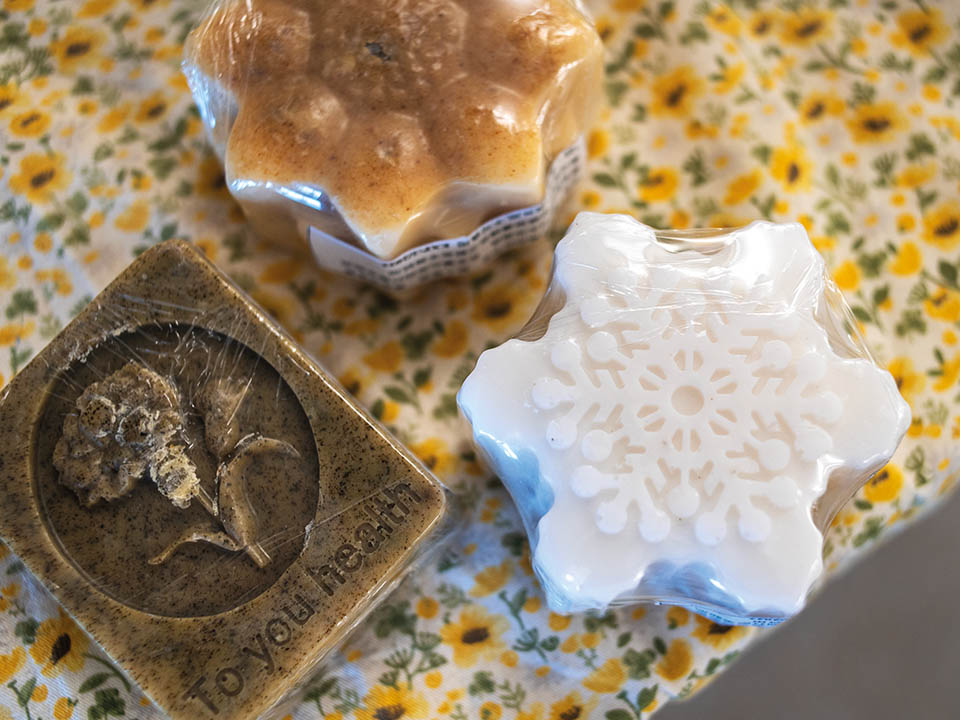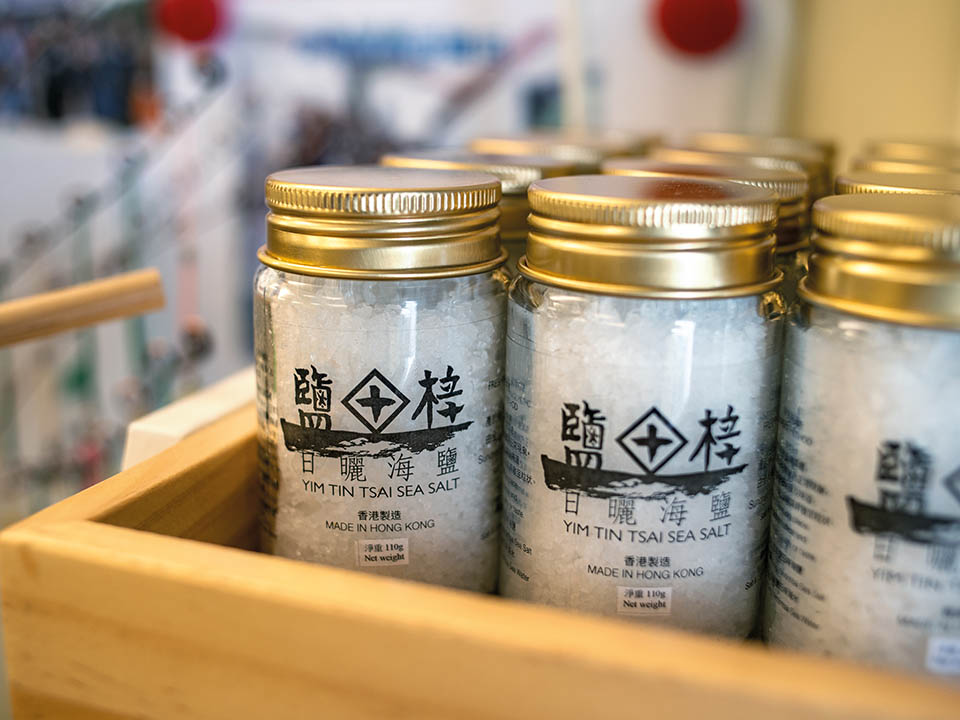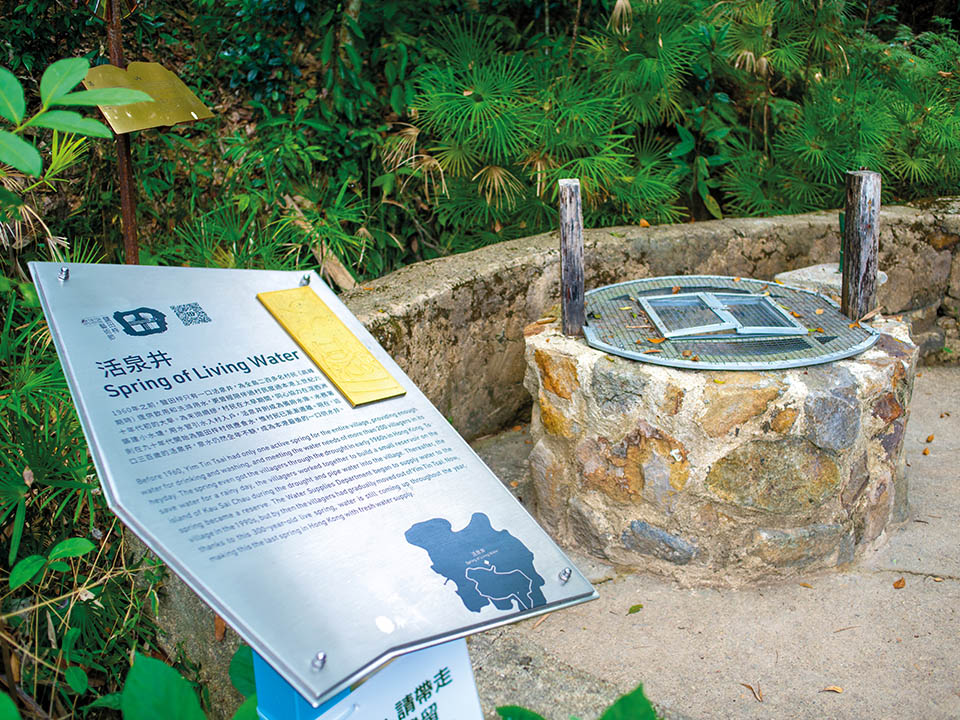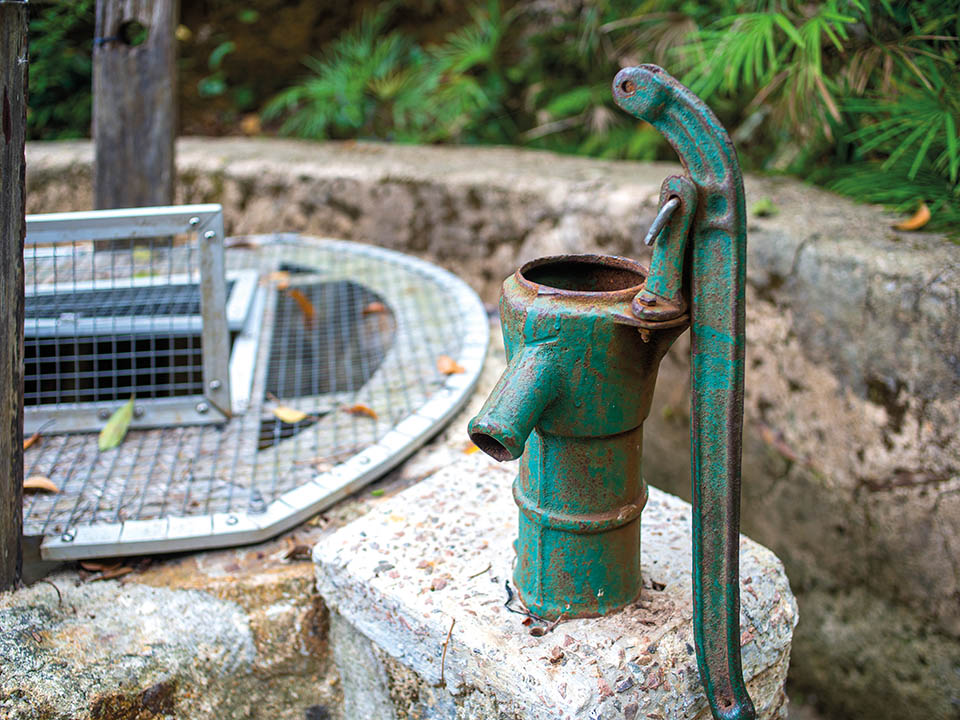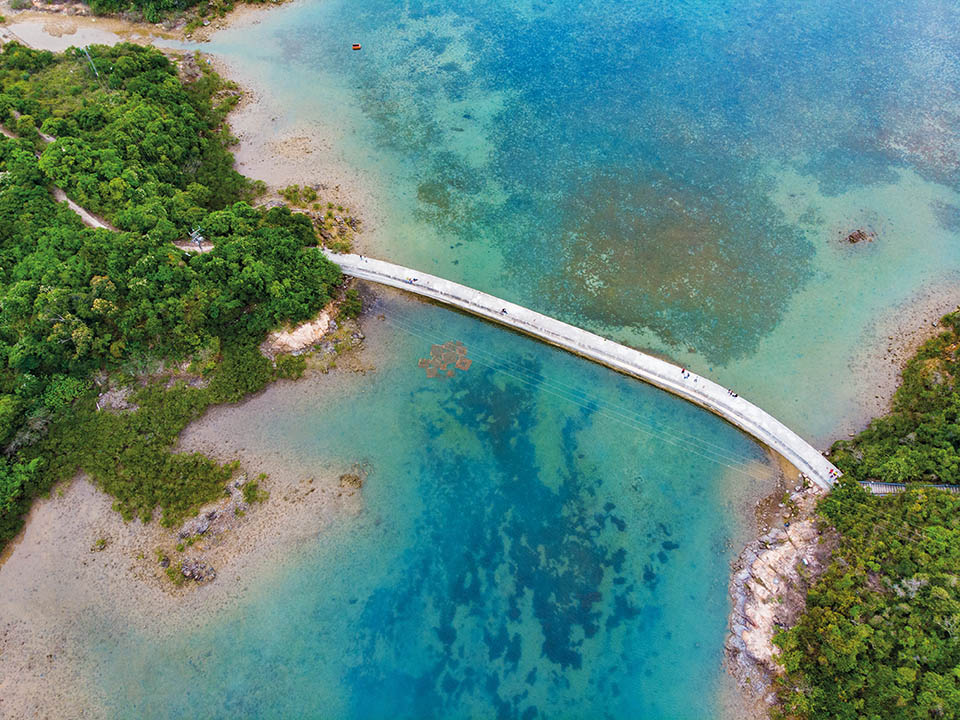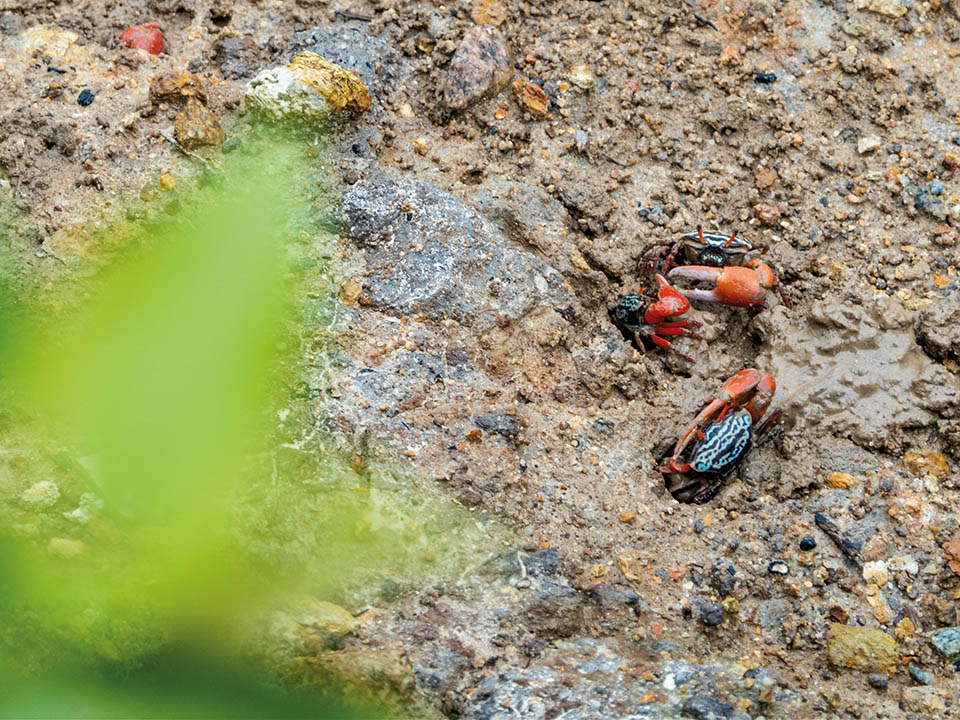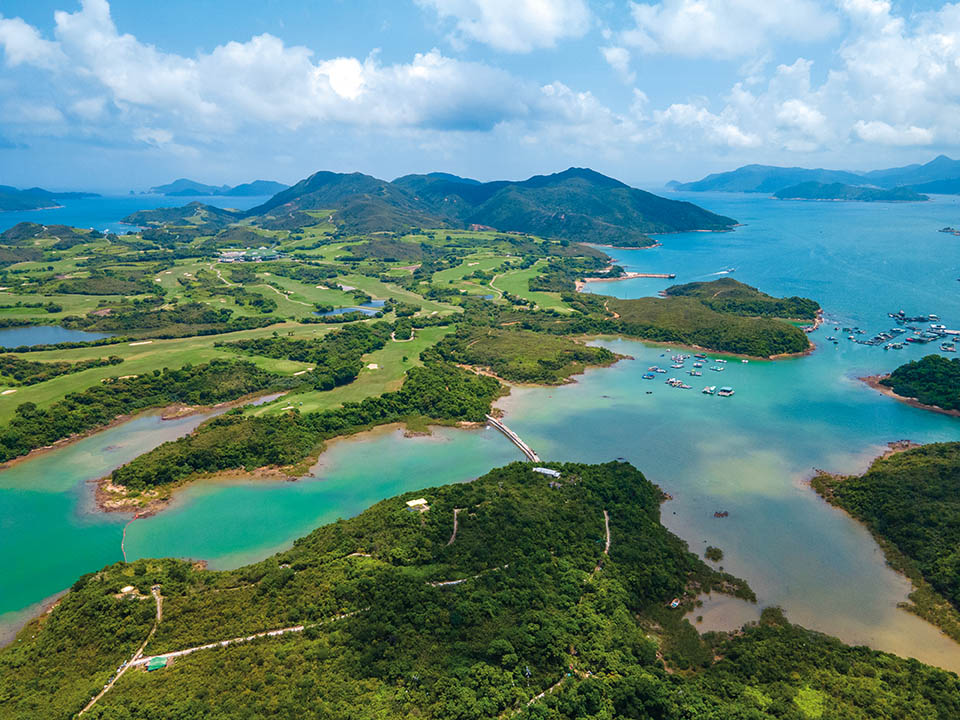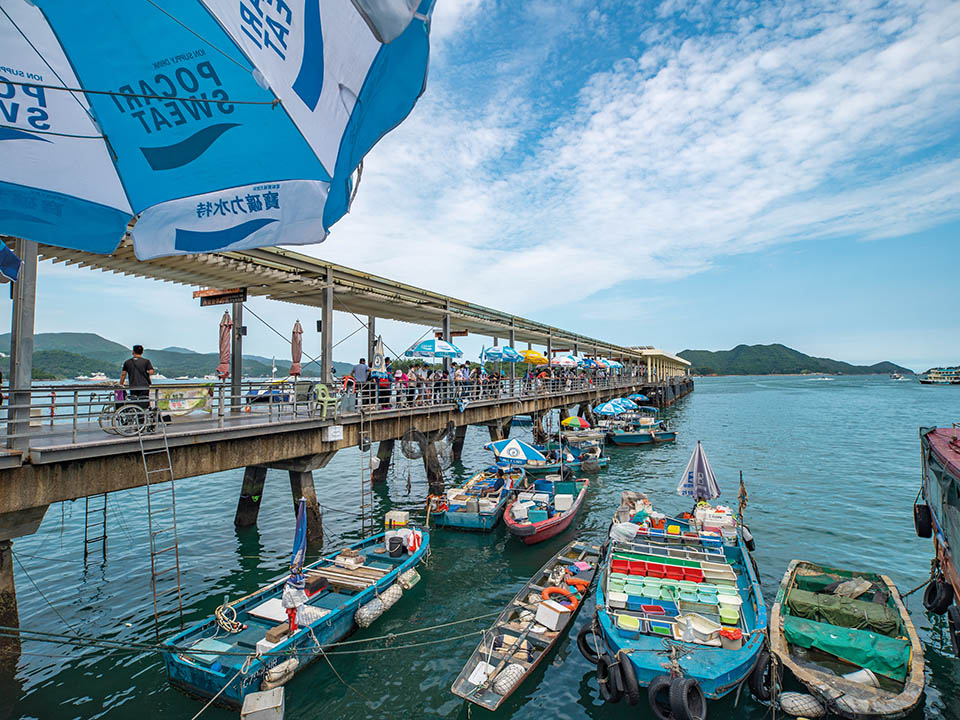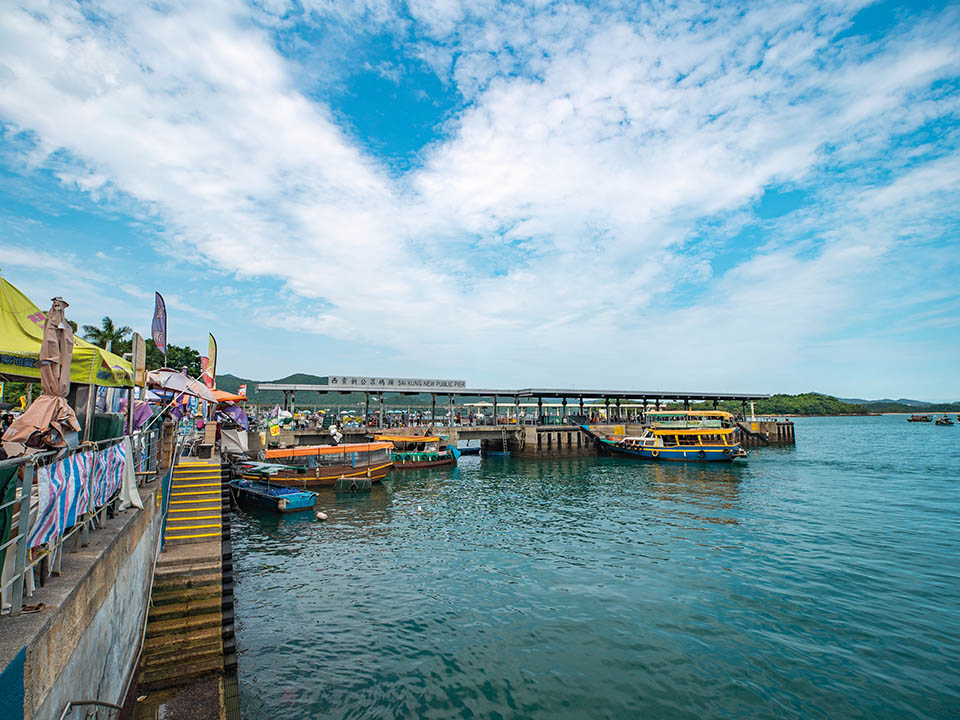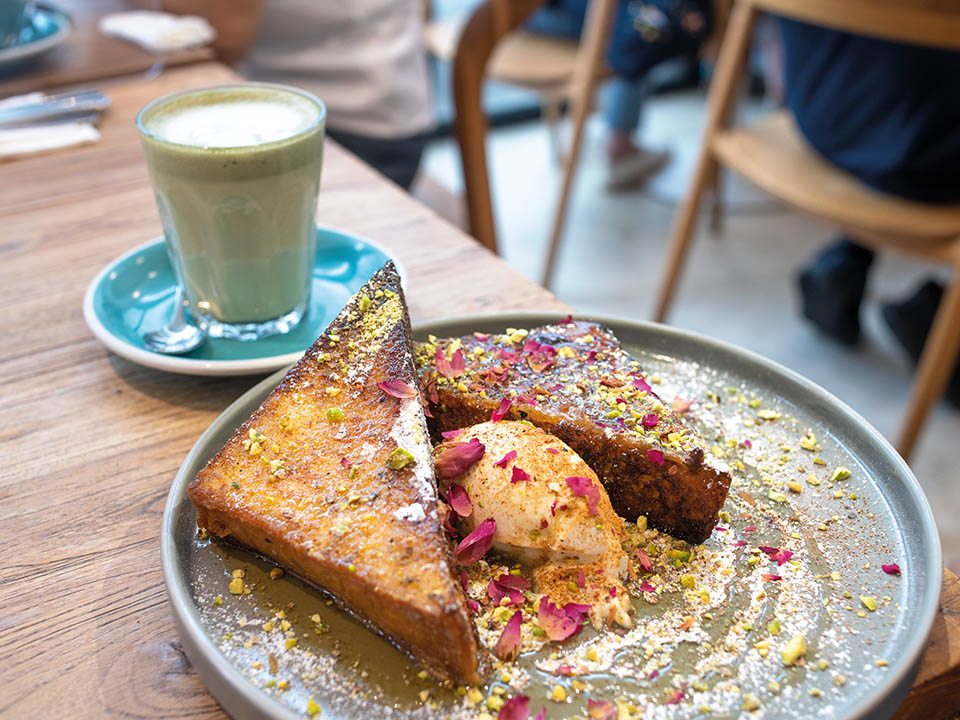
Written by South China Morning Post ( Morning Studio )
Artworks including a larger-than-life wooden sculpture and a colourful birdhouse tower greet visitors at the tiny, once abandoned island of Yim Tin Tsai, near Sai Kung Peninsula. The island, once the site of a Hakka Catholic village, has an almost 300-year history. Today it is home to numerous unique cultural heritage sites, including two UNESCO award-winning attractions — the salt pans (or yim tin, in Cantonese), which inspired its name, and the elegant century-old St Joseph's Chapel. Dozens of artworks, co-created by artists and villagers for the Yim Tin Tsai Arts Festival since 2019, have helped it become a dynamic open museum and hotspot for Instagram-worthy photographs.

Refuel
Yim Tin Tsai has a village store and a kiosk near the pier selling drinks and local snacks, such as Hakka dough dumplings and tofu custard.
-
St Joseph’s Chapel
The history of the elegant Romanesque St Joseph’s Chapel goes back more than a century. Its interior, including the stained-glass windows, red and white altar and high ceiling — exudes an air of tranquillity. The Grade II historic building, which witnessed the religious conversion of the island’s Hakka villagers, won the Award of Merit at the UNESCO Asia-Pacific Awards for Cultural Heritage Conservation in 2005. You can take some memorable selfies in front of the mosaic steps outside the chapel.
Get me there
-
Yim Tin Tsai Heritage Exhibition Centre
Ching Po was the only primary school for young children from Yim Tin Tsai and nearby villages when it was built in 1920. After villagers moved away, it finally closed in 1997. One of its two classrooms was converted into the island’s Heritage Exhibition Centre. A small display of artefacts, including traditional Hakka attire, utensils and farming tools, offers a rare glimpse into the lives of the islanders.
Get me there
-
Yim Tin Tsai Salt Pans
Open regularly to the public, Yim Tin Tsai’s salt pans are Hong Kong’s only natural salt pans and serve as a valuable education centre for people interested in the once-lost art of salt making. Upon entering the salt pans, visitors are welcomed by Sanctuary of Salt, a cube-shaped art installation that reflects the original shape of salt crystals. Volunteers are also on site to explain the salt-making process. Restoration work at the salt pans won an Award of Distinction from UNESCO in 2015 for “rekindling an interest in the history of Hong Kong’s early development”.
 The attraction usually hosts five half-hour opening sessions per day, from 10:30am to 3:30pm, when the kaito is operating (mostly Friday to Sunday). Check with the visitors’ centre when you arrive for the next available session.
Get me there
The attraction usually hosts five half-hour opening sessions per day, from 10:30am to 3:30pm, when the kaito is operating (mostly Friday to Sunday). Check with the visitors’ centre when you arrive for the next available session.
Get me there
-
The Salt and Light Preservation Centre
The Salt and Light Preservation Centre, founded in 2011, is passionate about conserving the island’s culture and ecology. It also serves as the Yim Tin Tsai visitors’ centre, as well as a shop selling unique souvenirs such as bottles of Yim Tin Tsai salt, and handmade soaps using salt produced on the island.
Get me there
-
Spring of Living Water
This humble-looking well, situated behind a grassy field, is the last spring in Hong Kong offering a freshwater supply. The Spring of Living Water, which has stored water on the island for centuries, was the only source of water for drinking and washing until a drought in the 1960s led residents to build a small reservoir on a nearby island. The Water Supplies Department began supplying water to the village only in the 1990s.
Get me there
-
‘Jade-Girdle Bridge’
A stroll to Jade-Girdle Bridge, on Yim Tin Tsai’s southern tip, will reward you with the sight of the island’s rich ecology and mangrove forests, which are home to many butterflies and insects. A narrow staircase leads you to Jade-Girdle Bridge. First built in the early 1950s by Hakka villagers, the bridge connects Yim Tin Tsai with the adjacent Kau Sai Chau Island. It’s one of the island’s most scenic spots with Instagram-worthy views of the stunning ocean and lush, tree-and-shrub-covered outlying islands.
Get me there
-
Dining Option
Sai Kung Town Centre
After completing an enjoyable hike around the island, end your day with a good meal or some delicious snacks in the laid-back seaside town of Sai Kung. Choose from lighter cafe fare, including toasted sandwiches, or sweet treats, such as apple pie or French toast, a sumptuous seafood feast at a waterfront Chinese restaurant, or dishes such as a home-smoked, pulled pork burger, English fish and chips or Thai vegetable curry from the many restaurants along Yi Chun Street and Man Nin Street.
Get me there

Transport
Getting to Yim Tin Tsai
MTR Choi Hung Station’s Exit C2 leads to the stop for minibus 1A, which goes to the terminus near Sai Kung Pier. You can also take bus 92 from MTR Diamond Hill Station, which stops at Sai Kung Bus Terminus, near the public pier. You will find Sai Kung’s Yim Tin Tsai ticket and reception booth near the minibus terminus, next to the waterfront. The ferry from Sai Kung New Public Pier operates mainly on Saturdays, Sundays and public holidays, with the first ferry leaving at 10am. The ride takes about 20 minutes.
Leaving from Yim Tin Tsai
Take the same ferry back to Sai Kung New Public Pier. The last ferry departs from Yim Tin Tsai at 5pm. Next to Sai Kung New Public Pier, there are many buses, minibuses or taxis that will take you to your next destination.
More Routes

Written by South China Morning Post ( Morning Studio )
Artworks including a larger-than-life wooden sculpture and a colourful birdhouse tower greet visitors at the tiny, once abandoned island of Yim Tin Tsai, near Sai Kung Peninsula. The island, once the site of a Hakka Catholic village, has an almost 300-year history. Today it is home to numerous unique cultural heritage sites, including two UNESCO award-winning attractions — the salt pans (or yim tin, in Cantonese), which inspired its name, and the elegant century-old St Joseph's Chapel. Dozens of artworks, co-created by artists and villagers for the Yim Tin Tsai Arts Festival since 2019, have helped it become a dynamic open museum and hotspot for Instagram-worthy photographs.

Refuel
Yim Tin Tsai has a village store and a kiosk near the pier selling drinks and local snacks, such as Hakka dough dumplings and tofu custard.

Transport
Getting to Yim Tin Tsai
MTR Choi Hung Station’s Exit C2 leads to the stop for minibus 1A, which goes to the terminus near Sai Kung Pier. You can also take bus 92 from MTR Diamond Hill Station, which stops at Sai Kung Bus Terminus, near the public pier. You will find Sai Kung’s Yim Tin Tsai ticket and reception booth near the minibus terminus, next to the waterfront. The ferry from Sai Kung New Public Pier operates mainly on Saturdays, Sundays and public holidays, with the first ferry leaving at 10am. The ride takes about 20 minutes.
Leaving from Yim Tin Tsai
Take the same ferry back to Sai Kung New Public Pier. The last ferry departs from Yim Tin Tsai at 5pm. Next to Sai Kung New Public Pier, there are many buses, minibuses or taxis that will take you to your next destination.



